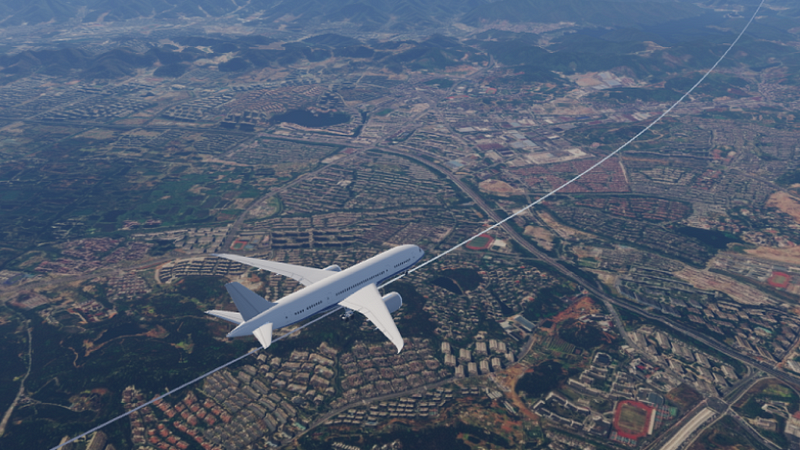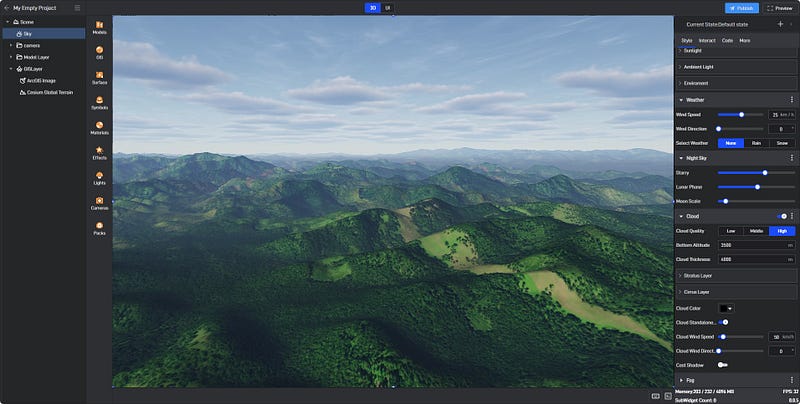From Virtual to Reality: How Unreal Engine and Wings Engine Shape Realistic Worlds
 Samuel M
Samuel MUnreal Engine, developed by Epic Games, is a high-end game engine that provides advanced 3D graphics processing capabilities and physics simulation functions. It is widely used in the development of high-quality games, virtual reality experiences, animated films, and architectural visualization projects.
When it comes to creating realistic virtual environments and real-world scene simulations, choosing the right 3D interactive engine is crucial. Unreal Engine has achieved tremendous success in the game development field, while the emergence of Wings Engine makes it possible to achieve AAA game rendering effects on the Web.
1. Terrain Simulation: Creating Infinite Landscape Possibilities
Unreal Engine allows users to create various complex terrain shapes, such as mountains, plains, and canyons, using its terrain generation tools. Users can adjust the parameters of the terrain, such as height, slope, and undulation, to create landscapes that meet the needs of their scenes. GIS data can be presented with ultra-high realism in the virtual world, including terrain, buildings, roads, and vegetation.
Wings Engine can create precise terrain models. This data can come from real-world geographic data, such as satellite images or laser scanning data, used to reconstruct real terrains. In Wings Engine, each component can add multiple GIS images and GIS terrains. Combined with photogrammetry technology, it can generate realistic 3D models, reflecting the real world with large-scale, high-precision, and high-resolution.

2. Physics Simulation: Bringing Realism Beyond the Screen
Unreal Engine supports adding physics simulation effects to terrains, such as rain simulation and snowfall. The rain simulation effect can be rendered in real-time in games or virtual environments, providing players with an immersive rainy day experience. The snowfall effect creates a winter scene atmosphere, with snowflakes gently falling, covering the ground, buildings, and vegetation, creating a world clad in silver, enhancing the immersive experience.
Wings Engine can similarly use advanced particle systems to simulate the generation, falling, and collision effects of raindrops. These particles can be configured to have specific speed, size, shape, and transparency to simulate real raindrops. When raindrops come into contact with terrain, buildings, or other objects, they produce realistic physical interaction effects, such as splashing and creating wet effects on the ground. These effects are achieved through physics engine simulations, significantly enhancing the realism and immersion of the scene, making you feel every drop of rain in the real world!

3. Performance Requirements: Balancing Effects and Hardware
Unreal Engine is renowned for its high-quality graphics rendering and powerful physics engine, but this also means it requires high-performance hardware to run. Developers need high-performance CPUs, GPUs, and substantial memory to fully utilize Unreal Engine’s features, which can be a challenge for development teams with limited budgets.
Wings Engine is meticulously optimized, with lower hardware requirements. It can run smoothly on lower-spec devices. The engine uses efficient rendering algorithms and resource management technologies to deliver smooth graphical performance and high frame rates, suitable for various types of 3D applications.
When choosing the right engine, project requirements and team technical capabilities should be considered. Whether you aim to pursue the highest quality game experience or create realistic impressions in a virtual world, Unreal Engine and Wings Engine both provide powerful tools and support, allowing your creativity to soar in 3D space!
Subscribe to my newsletter
Read articles from Samuel M directly inside your inbox. Subscribe to the newsletter, and don't miss out.
Written by

Samuel M
Samuel M
Industrial designer, committed to sharing the most cutting-edge 3D creation tools and techniques to allow more people to experience the unlimited possibilities of creativity.